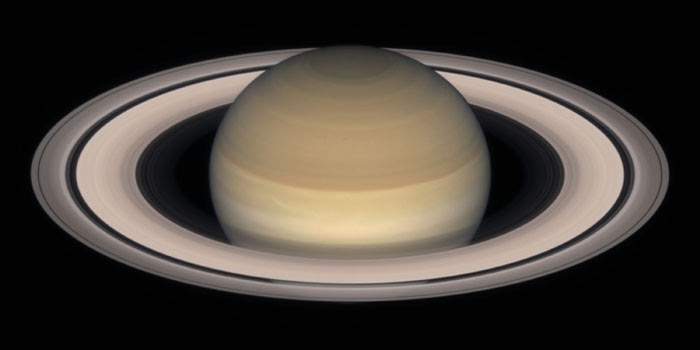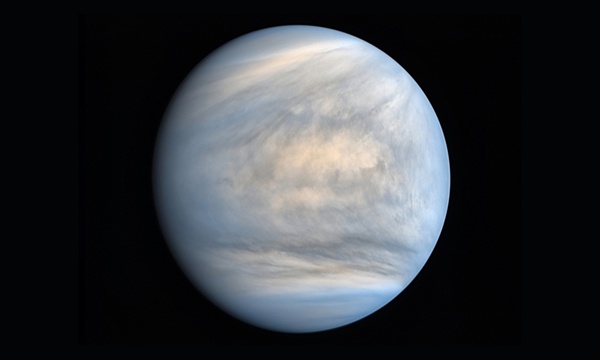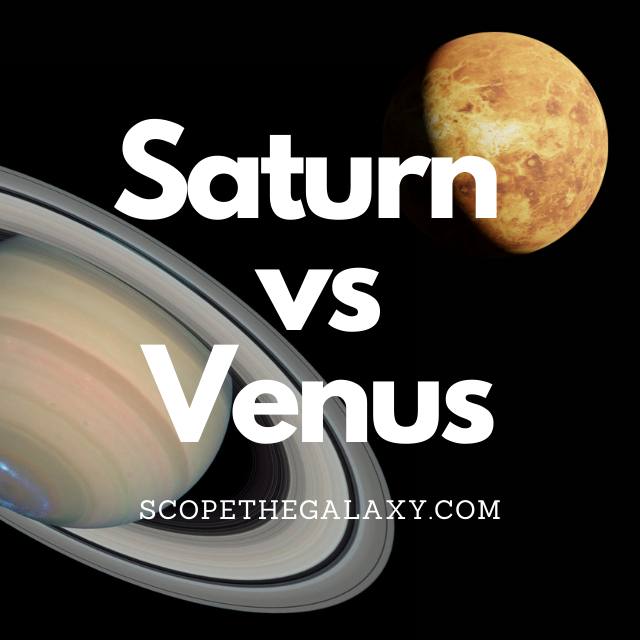*This post may contain affiliate links. This means we may make a commission if you purchase an item using one of our links*
The main differences between Saturn and Venus is that Saturn is a gas giant whilst Venus is a terrestrial planet, Venus is just under a tenth, Saturn has 82 moons orbiting it whilst Venus has zero, Venus is the hotter and brighter planet and Venus is the 2nd closest planet to the Sun whereas Saturn is the 6th farthest.
These are some of the more core differences so continue reading for more thorough breakdown of these differences and the odd few similarities throughout the rest of this article.
What Is The Planet Saturn?
Table of Contents

Saturn is the second largest planet in our solar system, that has a multitude of rings surrounding its gaseous exterior. It’s also the 6th farthest planet from the Sun.
As Saturn falls under the gas giant moniker, the planet is mostly made up of gases. However, Saturn’s composition is a little different from Jupiter’s where its atmosphere is mixture of hydrogen and ices containing elements of Ammonia.
It’s core on the other hand is comprised of a dense core of nickel and iron, which is then surrounded by rocks compressed so strongly that it tends to reach scorching hot temperatures of 11,700+ degrees Celsius.
On the other hand, It’s gaseous atmosphere is far cooler. The exterior generally sits in the extreme sub zero range where Saturn’s temperatures is -138 degrees Celsius.
This is generally constant throughout the yellow ringed giants day to day. In fact it’s much colder than even the coldest place on Earth, which would be Eastern Antarctic Plateau, Antarctica that hits -94 degrees Celsius, which is more than 40 degrees Celsius warmer.
Being so large (116,460km) , Saturn’s gravitational pull is obviously strong.
That’s why over it’s 4.5 billion years of existence, beyond its rings this yellow gas giant has managed to accumulate 82 different moons along with other smaller interstellar debris that now orbit it.
In fact it’s largest moon Titan is literally bigger than one of the 8 planets orbiting the Sun, Mercury.
Saturn also orbits the Sun but, as the 6th farthest planet from it, it does mean a singular orbit will take it 29.4 Earth years to complete. In comparison to its axial orbit which only takes 10.7 hours, this is an extremely long time.
What Is The Planet Venus?

Venus is the 2nd closest planet to the Sun and is often regarded as Earth’s sister planet. It’s very close to our Earth in size where its diameter is 12,104km. This is just over 600km less wide than our home planet.
Unlike all the planets further outside the Sun’s orbit, Venus and even mercury have no moons orbiting it. The most probable reason for this is due to its closer proximity to it, which means that smaller objects orbit the Sun as opposed to Venus.
Venus is also the hottest planet in our solar system where its surface temperature is 475 degrees Celsius. This is due to a number of factors, like the thicker atmosphere, close proximity to Sun, the reasons for which have been explained in more detail here.
It’s core is hot too, similar to that of the ice giants and Earth, where it stands at 5,200 degrees Celsius.
As a result of this thicker atmosphere, Venus is also able to reflect a lot more of the light the Sun projects at it, making it both the hottest and brightness planet in our solar system. This is why for the longest time, and even till this day Venus is often referred to as the morning or evening star.
The thicker atmosphere is mostly compromised of carbon dioxide, and thick clouds of sulfuric acid. This does result sulfuric acid rain on the planets surface, which of course is very corrosive.
Being so close to the Sun also mean its orbital cycle is much shorter. It takes Venus 225 days to complete a full cycle, on the contrary a single day is actually longer than this where it takes around 243 days for a full rotation around its axis.
This is partially down to its distance from the Sun and the thick atmosphere surrounding this terrestrial planet. The axial tilt on Venus is also different from the other planets in our solar system where it is practically straight at 3 degrees.
All in all this is certainly one of the most interesting planets in our solar system and in many peoples eyes, could very well have supported life in the past based on how close its shape and size is to that of Earth.
Similarities Between Saturn And Venus
There definitely are more differences than similarities when comparing Saturn and Venus however, common features are still prevalent between the two, which in this case include the below:
- Both planets orbit the Sun in a circular pattern.
- Both have a hotter central core.
- Both are a spherical in shape.
Differences Between Saturn And Venus
Venus and Saturn have a multitude of differences so, in this section of the article I’ll be going over what these differences are.
As for how they differ, they include the following:
- Saturn is a pale yellow color whilst Venus is yellowy white.
- Venus is the 2nd farthest planet from the Sun whilst Saturn is the 6th farthest meaning Venus orbits the Sun in 225 days and Saturn does so in 29.4 years.
- Saturn is a gas giant whilst Venus is a terrestrial planet.
- Saturn has 82 moons whilst Venus has 0.
- Saturn has 7 rings surrounding it whilst Venus has 0.
- Venus has an axial tilt at 3 degrees whilst Saturn’s axial tilt is 27 degrees (26.7 to be more accurate).
- Venus takes 243 days to rotate around its axis whereas Saturn does so in 10 hours and 34 minutes.
- Saturn is much bigger than Venus with a diameter of 116,460km whereas Venus’ diameter is 12,104km.
- Venus is far hotter than Saturn with its surface temperature around 475 degrees Celsius. Saturn has a surface temperature of around -138 degrees Celsius.
- Venus is the brightest planet in our solar system.
- Saturn’s core is hotter than Venus’ where it’s roughly 11,700 degrees Celsius in comparison to Venus’ core temperature of around 5,200 degrees Celsius.
- Saturn has a stronger magnetic and gravitational field.
Summary
One is a giant gas planet and the other a far smaller terrestrial planet like Earth so, it makes sense that they’ll differ significantly in variety of ways. Whether it be temperature, brightness, size and of course their erratic conditions on their respective surfaces.
Yes, they are part of the same solar system but, that’s about as far as the commonalities between Saturn and Venus stretch.

